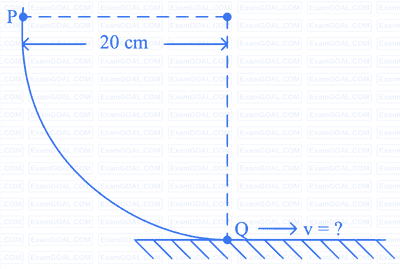
As per the given figure, a small ball P slides down the quadrant of a circle and hits the other ball Q of equal mass which is initially at rest. Neglecting the effect of friction and assume the collision to be elastic, the velocity of ball Q after collision will be :
(g = 10 m/s2)


The figure represents the momentum time ($$\mathrm{p}-\mathrm{t}$$) curve for a particle moving along an axis under the influence of the force. Identify the regions on the graph where the magnitude of the force is maximum and minimum respectively?
If $$\left(t_{3}-t_{2}\right) < t_{1}$$


A ball of mass $$200 \mathrm{~g}$$ rests on a vertical post of height $$20 \mathrm{~m}$$. A bullet of mass $$10 \mathrm{~g}$$, travelling in horizontal direction, hits the centre of the ball. After collision both travels independently. The ball hits the ground at a distance $$30 \mathrm{~m}$$ and the bullet at a distance of $$120 \mathrm{~m}$$ from the foot of the post. The value of initial velocity of the bullet will be (if $$g=10 \mathrm{~m} / \mathrm{s}^{2}$$) :

If momentum of a body is increased by 20%, then its kinetic energy increases by